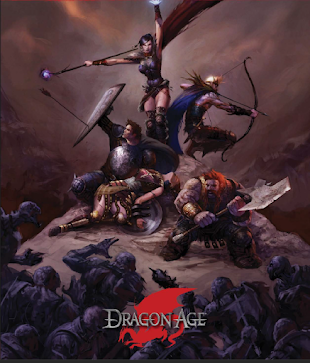Ticking Clocks
Ticking Clocks
One of my favorite things to do in an RPG is give the players a ticking clock. Having them work against some time pressure, whether it is in-game or real-world, or an actual threat or just the perception of one, can help focus a Party's goals and give them a clear direction for their actions. If your Party is anything like the ones I typically run for, it can be hard to get them motivated beyond their character's own interests many times. Even the best adventure hooks can fall flat. Leading a horse to water, and all that.
But a restrictive time frame to achieve their goals, or a limited number of days to prevent apocalypse can bring into sharp focus those activities that are most beneficial to the story (and often themselves) and promotes acting on them in the most efficient and expedient means possible.
Heads up, links below are affiliate links.
What time is it?
When discussing the use of time constraints in our games, it is important to consider which “time” we want to be tracking. The most common time would be the in-world clock for our games or campaign settings, but as mentioned above, we can also use real-world clocks to up the pressure.
In-game Time
Whether we think it about it frequently or infrequently, our games operate on a schedule. Every time the characters rest, time passes in world. A party can spend five, four hour sessions in a single dungeon but only two or three in-game hours have passed. There isn't much consistency in how in game events actually pass time with the exception of rests.
For in-game time, the pressure can feel a bit abstract. The only real way to make players cognizant of the time constraint facing them in the world is for the GM to constantly remind them of it. To let them know how much time an event has consumed and how much time remains.
That's an important thing to remember too. In order to keep the pressure up, we must make the players, not the characters, aware of how much total time they have when the clock starts. Doing so means each time the GM tells the players how much in-world time has elapsed, they feel the pressure. They are running out of a resource and their may be nothing they can do to staunch the flow.
A great example of this comes from an adventure for the Fantasy Flight Games Star Wars RPG, Age of Rebellion. The adventure itself is called Friends like These and involves the PC’s preparing the defenses of a lone, secret shipyard from an impending Imperial assault. At the very start of the adventure, the PC’s are alerted to the oncoming attack by Rebel Command, and are told they only have 48 hours from the time they receive the transmission until the attack begins. After this point, every possible action and story point in the adventure lists how much time it consumes. Travelling between planets can take as much as several hours, where as small roleplaying encounters may only take 15 minutes, but the point is, every minute is precious. PC’s likely don’t have time to explore every conceivable option for repelling the invasion and have to make choices about what is the most efficient use of their time.
What adds to the pressure, is that in the Star Wars setting, it is easy to travel large distances in a comparatively short amount of time. This means the PC’s can get too far away, or too held up, and the assault can begin on the hidden shipyard, without them being present. This also signals to the players that the world doesn’t wait for them, and moves of its own accord.
The last thing the adventure does well is using this time mechanic even during the Imperial attack. The PC’s are told that the must be able to hold off the Empire’s forces for five (5) hours before Rebel reinforcements can arrive on the scene to aid the PC’s and the shipyard. Actions and events during the siege then continue the theme of time management detailing how the PC’s attempts at reinforcing the shipyard and enlisting help from other parties may have effectively slowed the Empire’s advance. At the end of the ticking clocks, if enough sufficient preparations have been made the Rebel Fleet arrives and the PC’s win the day.
Real-World Time
The other option we can use in our games is real world pressure. The mechanism for this should be fairly obvious. We can use an egg timer, a sand timer, an alarm on our phones, any of these will do to tell the players that when the timer goes off in the real world, something happens in the game world. What the triggered event actually is, is completely up to the GM and depending on the level of suspense you wish to build, does not have to be explicitly made known to the players.
An example of what this kind of pressure looks like can be taken from one of the earliest sessions of my Ghosts of Saltmarsh campaign. The party of 1st Level adventurers was going to explore the sunken ruins of Warthalkeel on a mission from someone in the town of Saltmarsh. The quest-giver also provided the party with one potion of waterbreathing each. Per the potion’s description, the waterbreathing effect lasts for one (in-game) hour.
At this point, when the PC’s consumed the potions to descend beneath the waves, I turned on a timer. We use Owlbear Rodeo as our Virtual Table Top, which has functionality built into it for a GM to set a timer, but the players just see an abstract timer bar that gets shorter with time. I told them that they had only an hour, but as discussed above, this timer could be used with no indication on how long it is actually set for or what happens when it concludes, just to keep the players on their toes.
Now, for the waterbreathing potion, we had to make some exceptions. I paused the timer during combats, as what typically takes less than one minute of in-game time can take nearly 45 minutes of real world time, but I let it run when the players would spend time discussing the merits of different exploration options. I added time back a few times based on questions they asked me that I had to look up or consider, but never more than 1-3 minutes. In total I think they had approximately 1.5 hours of a play session with this clock hanging over their heads, and in the very last minutes of the timer they had to make some decisions about what parts of the ruins they would have to explore next time.
As a system for applying pressure it worked out better than I could have hoped for. It kept them focused and engaged and set an interesting precedent for how time might be handled in the campaign.
Abstract Time
There is one other method of time keeping that we can use to apply pressure to our games. It is conceptually similar to in-game time keeping, because that’s really what it’s measuring, but it goes about it in a slightly different way.
Rather than tracking minutes/hours/days etc., we can track abstract units of time. This idea comes from the excellent Blades in the Dark RPG. In Blades the GM is encouraged to track the progress of things through “clocks”. The game text instructs you to draw a circle on a piece of paper or index card and divide it up into equal parts. It could be a circle with four sections, six sections, eight sections or more. However many sections you require for the event you are tracking. Typically what these “clocks” are measuring isn’t “time” in the traditional sense but the development of consequences for the PC’s. Step on a twig while sneaking past a guard? Fill in one segment on the “Alert Guards Clock”. Kill a group of thugs from a rival gang? Fill in four segments on the “Gang War” clock.
You get the idea. This system can be used in any game though to track these kind of “non-temporal” developments. We can also use the “clocks” as actual clocks. Each section of a clock could be used to track an amount of time, so we could split a circle into quarters and each section tracks one fourth of a day, or 6 hours in-game time. Alternatively we could set up another clock where each segment represents one week of in-game time. Therefore, the clock measures approximately a two month period.
In this example the GM doesn’t have to track every hour or even day. If they decide that the actions of the party have reasonably used up one week of in-game time, they can simply fill in one segment of the clock, signifying to the players that time is passing, and they are one step closer to whatever consequence lies at the end of that clock.
Use Sparingly
Applying time pressure like this to our games continuously though can get tedious. It may cause our players to feel burned out, like they are always racing the clock and never get the opportunity to roll play and luxuriate in their characters and this is fair criticism.
Overuse of these time constraints can make a campaign or series of campaigns too stressful to play. It depends on your group of course, some people may love it, but in general I would suggest having appropriate periods of time where the PC’s are not racing against time. Where they can adventure freely and take as much time as they wish to complete their objectives. In this way you can help the rhythm of your campaign by giving it up beats and down beats, periods of urgency and relaxed periods too.
So the next time you need to add some additional pressure to your game, or find a way to draw in and engage your players, consider adding some time constraints. Force them to think quickly, and trust the decisions they make, because you’re not giving them time to consider every conceivable option. I guarantee you’ll end up with some memorable moments in your game, and as always, feel free to let me know what they are over at therpgstudy@gmail.com
-The RPG Study




Comments
Post a Comment